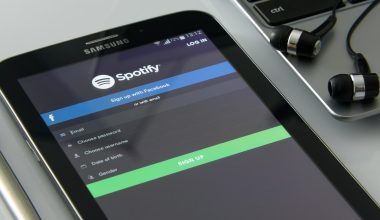If you’re an artist or music producer, sharing your music with the world is probably one of your biggest dreams. Thanks to technology, it’s easier than ever to make your music accessible to listeners everywhere. Releasing your music on all streaming platforms is a game-changer, and I’m here to guide you through the entire process, step by step. Whether you’re a seasoned musician or just starting, this guide will make everything crystal clear.
Understand Why Streaming Platforms Matter
Before diving into the steps, let’s talk about why you should release your music on all streaming platforms. Services like Spotify, Apple Music, Amazon Music, and Deezer allow you to reach a global audience. They also offer opportunities for exposure, royalties, and direct interaction with fans. These platforms are where people discover and listen to new music every day. So, if your goal is to grow your music career, being present on these platforms is essential.
Step 1: Prepare Your Music for Release
The first thing you need to do is ensure your music is ready. Ask yourself these questions:
- Is the audio quality professional? Make sure your tracks are mixed and mastered.
- Do I have album artwork? Platforms require cover art that meets their specifications.
- Is my music original? Ensure you own the rights or have proper licensing if you’ve used samples.
To avoid delays, check the technical requirements for audio files. Most platforms accept WAV files with specific bitrates, so export your tracks accordingly.
Step 2: Choose a Distribution Service
You can’t directly upload your music to streaming platforms. Instead, you need a digital distribution service to act as a middleman. Some of the most popular distributors include:
- DistroKid
- TuneCore
- CD Baby
- Ditto Music
- Amuse
Take some time to research these options. Consider factors like pricing, royalties, and additional features such as marketing tools. Most services charge a flat fee or take a small percentage of your earnings.
Step 3: Create an Account With Your Chosen Distributor
After picking a distributor, sign up for an account. The process is usually straightforward. Provide your name, email address, and payment details. Some distributors may also ask for tax information since your earnings could be subject to tax.
Once your account is set up, familiarize yourself with their dashboard. This will be your main hub for uploading and managing your music releases.
Step 4: Upload Your Music
Now comes the exciting part—uploading your tracks! Follow these steps:
- Log in to your distributor’s dashboard.
- Upload your audio files. Ensure they meet the required specifications.
- Add metadata. This includes your song title, artist name, album name, and genre. Be accurate and consistent to avoid confusion.
- Attach album artwork. Ensure your cover art is high-quality and meets the platform’s size requirements.
- Set a release date. Plan ahead and give yourself enough time to promote your release.
Step 5: Choose Streaming Platforms
Most distributors allow you to release your music on multiple platforms with just one click. Popular options include:
- Spotify
- Apple Music
- Amazon Music
- YouTube Music
- Deezer
- Pandora
- Tidal
Some distributors even offer distribution to lesser-known platforms or regional services. Check all the available options and select the ones that align with your target audience.
Step 6: Promote Your Release
Uploading your music is only half the battle. To make an impact, you need to promote it effectively. Here are some strategies:
- Social Media: Share teasers, countdowns, and behind-the-scenes content.
- Email List: Notify your subscribers about the release.
- Playlists: Submit your music to curated playlists for more exposure.
- Collaborations: Partner with other artists or influencers to widen your reach.
- Press Releases: Contact music blogs and media outlets to feature your release.
The more buzz you create, the more likely people will stream your music.
Step 7: Monitor Your Analytics
After your music goes live, keep an eye on its performance. Streaming platforms provide detailed analytics that show:
- How many streams you’re getting.
- Where your listeners are located.
- Which platforms are performing best.
Use this data to refine your marketing strategy. For instance, if most of your streams come from Spotify, you might want to focus more on promoting your Spotify profile.
Step 8: Collect Your Royalties
One of the best parts about streaming is earning royalties. Your distributor will collect these on your behalf and deposit them into your account. Keep track of your earnings and ensure they align with your expectations.
Step 9: Engage With Your Fans
Streaming platforms aren’t just about the music; they’re also about connection. Here’s how to stay engaged:
- Respond to comments and messages.
- Update your profiles with new photos and bios.
- Share playlists that include your tracks.
The more active you are, the more your fans will feel connected to you.
Step 10: Keep Releasing Music
Consistency is key to building a loyal fanbase. Plan your future releases and keep your audience excited. Whether it’s a single, an EP, or a full album, releasing regularly will keep you relevant.
Final Thoughts
Releasing your music on all streaming platforms might seem daunting at first, but once you break it down into steps, it becomes much more manageable. Remember, this is your chance to share your art with the world. Take your time, follow this guide, and soon enough, your music will be streaming everywhere.
Related Articles:
For further reading, explore these related articles:
- How to Release Your Music on All Streaming Platforms for Free
- How to Release Your Music on iTunes with No Upfront Fees
For additional resources on music marketing and distribution, visit DMT RECORDS PRIVATE LIMITED.





